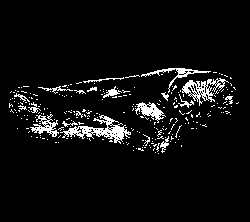
From as early as the predynastic period, leather was made from the skins of both domesticated and wild animals. Analysis of leather objects has revealed that the skins of goats, sheep, calves, cattle and possibly gazelle were used. Predynastic tombs contain not only leather clothing originally intended for the living, but also wrappings for the dead. Throughout history, leather has been used to make all kinds of products. Alongside clothing, there are also bags (mainly goat's leather used to transport water), cushions, the seats of chairs and stools, belts and ropes, parts of war chariots, and sandals. In addition, leather was also used as a writing material. The skins of animals were also used to cover shields, as may be seen for example on models dating from the Middle Kingdom. The skins could be prepared in a number of ways: by drying, curing, rubbing with salt or ochre (which also coloured the leather), or treating with fat or urine. Pieces of tanned leather and leather treated with alum have also been found. The tanning material was often the fruit of the acacia, as is also described by several classical authors who visited Egypt in the Graeco-Roman Period. The end product could be provided with a coloured decoration. Wall paintings in a number of tombs from the Old Kingdom tombs (Giza and Saqqara), Middle Kingdom (Beni Hassan) and the New Kingdom (Thebes) show the various stages in the making of leather and leather products.